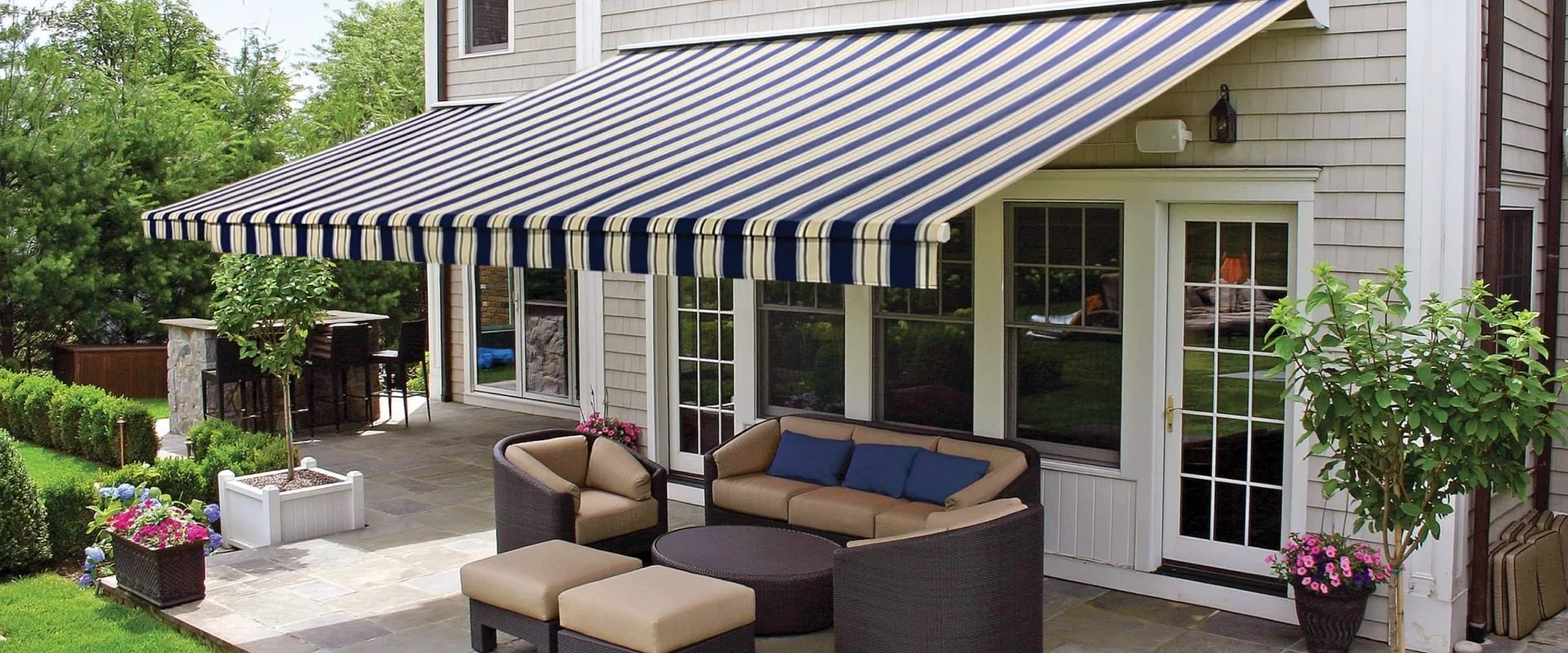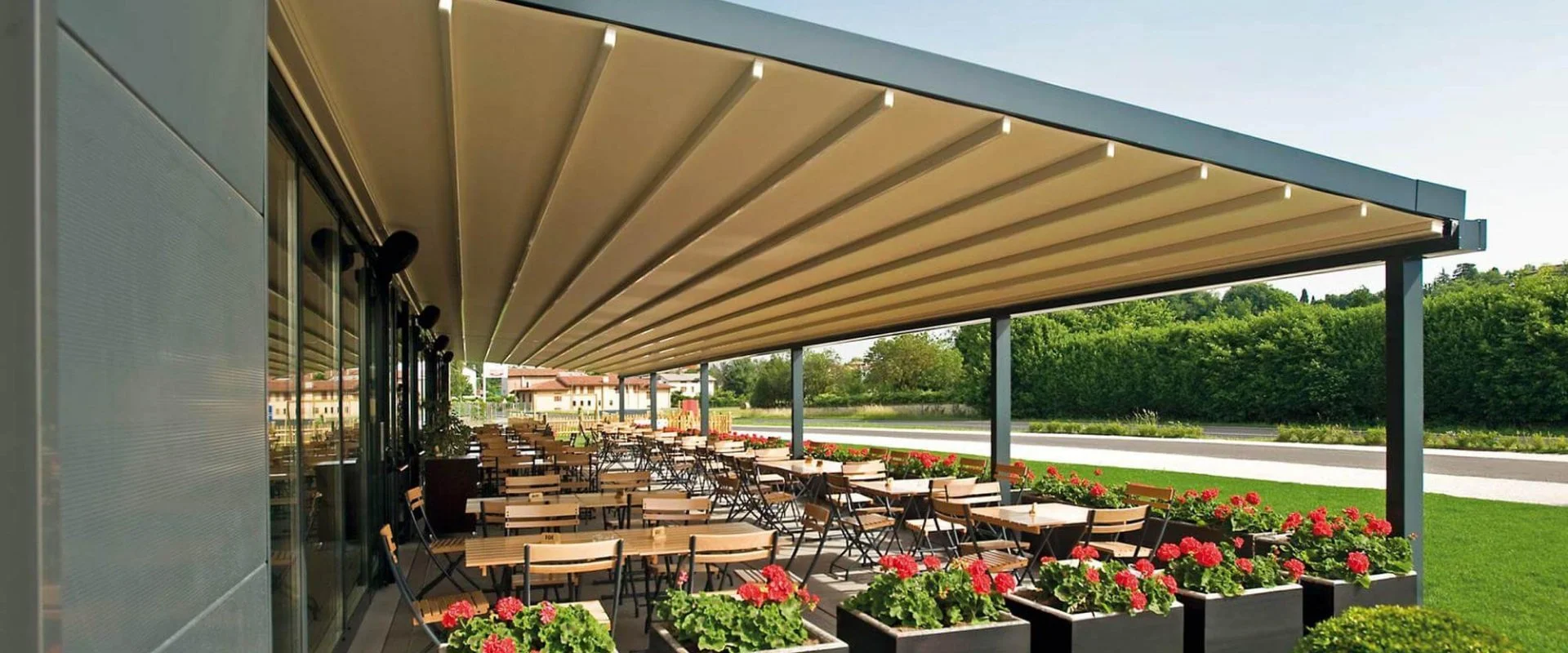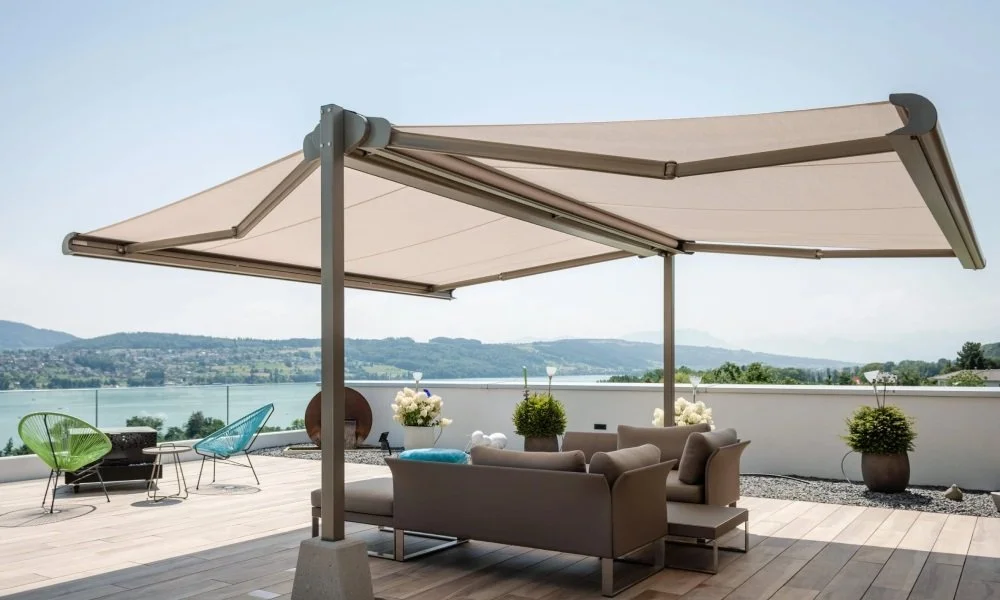5 Best Wind-Resistant Awnings For Sunshine Coast Living
Living on the Sunshine Coast is a dream come true for many, but the strong coastal winds can be a real challenge when it comes to outdoor living spaces.
Choosing the right awning isn't just about adding shade and style to your home – it’s about ensuring durability and safety in blustery conditions.
So, what are the best awnings for windy areas on the Sunshine Coast?
In this article, we’ll answer that question by exploring:
The top 5 awning options for windy areas
Factors to consider when choosing the best awning
The costs involved in selecting and installing the right awning
Finding the perfect awning means balancing aesthetics with functionality, especially when you live in a place known for its unpredictable winds. We'll explore the top-rated options that stand up to strong gusts while providing the shade and comfort you desire.
Let’s get started and ensure your outdoor space remains a haven, come rain or shine (or wind!).
COVERINGS SC TIPS:
|
Top Awning Picks for Windy Environments
1. Retractable Awnings
They are popular for their flexibility and ease of use. They can be extended or retracted depending on the weather, making them a versatile option for homes facing variable wind conditions.
Pros
Easy Operation
Convenience: Effortlessly operated by a manual crank or motor.
Versatility: This can be extended or retracted based on weather conditions.
Space-Saving
Compact Design: When retracted, they take up minimal space and blend into the exterior design.
Flexibility: Suitable for various spaces, from patios to large decks.
Cons:
Cost
Expensive: Higher initial investment.
Maintenance: Requires regular maintenance to ensure smooth operation.
Wind Resistance
Limited Protection: Less sturdy in extreme winds compared to fixed options.
Durability Concerns: Moving parts may wear out faster in harsh conditions.
2. Fixed Awnings
They are permanently attached to the exterior of your home. They offer robust protection and are designed to withstand strong winds.
Pros:
Stability
Durability: Strong and stable, providing constant protection.
Wind Resistance: Excellent performance in windy conditions.
Customisation
Design Variety: Available in various designs and materials.
Long-Lasting: Minimal wear and tear, ensuring longevity.
Cons:
Flexibility
Permanence: Lack the flexibility to retract or adjust.
Space Consumption: This can take up more space and affect the aesthetic of the exterior.
Installation
Complex Installation: Requires professional installation, adding to the overall cost.
Fixed Position: Cannot be easily relocated or adjusted once installed.
3. Motorised Awnings
Motorised awnings come with the added benefit of automation. They can be controlled via remote or even smart home systems.
Pros:
Convenience
Ease of Use: Operated with a remote control, making it user-friendly.
Advanced Features: Often integrated with sensors for automatic retraction in strong winds.
Modern Appeal
Smart Home Integration: Compatible with smart home systems for added convenience.
Aesthetic Value: Sleek and modern design enhances home exteriors.
Cons:
Cost
High Cost: More expensive due to advanced technology.
Maintenance: Higher maintenance requirements to keep the motor and sensors functioning.
Technical Issues
Reliability: Potential for technical malfunctions.
Dependence on Power: Requires a power source, which can be a limitation in some areas.
4. Canopy Awnings
They are supported by a frame and offer extensive coverage. They are ideal for larger outdoor spaces and provide consistent shade and protection.
Pros:
Coverage
Large Area: Provides extensive coverage, perfect for patios and large decks.
Sun Protection: Excellent UV protection, keeping outdoor areas cool.
Durability
Sturdy Construction: Built to last with strong materials.
Weather Resistance: Withstands various weather conditions, including strong winds.
Cons:
Installation
Complex Setup: Requires professional installation.
Permanent Structure: Once installed, they are not easily adjustable.
Aesthetic
Bulkiness: This can appear bulky and may not suit all architectural styles.
Space Requirement: Requires ample space for installation.
5. Freestanding Awnings
They are not attached to the building but are supported by their own frame. They offer flexibility in placement and are ideal for creating shaded outdoor areas away from the house.
Pros:
Flexibility
Mobility: Can be moved and repositioned as needed.
Versatility: Suitable for various outdoor areas, not limited to adjacent to the house.
Ease of Use
Simple Setup: Easier to install.
Independent Structure: This does not impact the building’s exterior.
Cons:
Stability
Less Stable: May not be as stable in extremely windy conditions.
Additional Anchoring: This may require extra anchoring to ensure stability.
Maintenance
Higher Maintenance: Requires regular checks and maintenance to ensure safety.
Potential Wear: Exposure to elements may lead to faster wear and tear.
Key Factors to Consider When Choosing Wind-Resistant Awnings
Wind Resistance
Any awning you choose must be able to withstand strong gusts without getting damaged or posing a safety risk.
Fixed awnings generally offer better wind resistance compared to retractable or motorised ones. Look for options that are designed specifically for high-wind conditions, with reinforced structures and robust anchoring systems.
Moreover, wind-resistant features such as wind sensors in motorised awnings can provide added protection by automatically retracting the awning during extreme wind events.
Ensuring your awning has a high wind rating can save you from costly repairs or replacements down the line, providing peace of mind during stormy weather.
Material Quality
High-quality materials like marine-grade aluminium and UV-resistant fabrics are essential for withstanding the harsh coastal environment. These materials not only resist wind but also offer protection against sun damage, rust, and corrosion.
Additionally, investing in premium materials can reduce the need for frequent maintenance and replacements. While the initial cost might be higher, the long-term benefits of durability and reduced upkeep make it a worthwhile investment.
Ease of Operation
An awning should be easy to operate, especially if you need to adjust it frequently based on changing weather conditions. Retractable and motorised awnings are particularly convenient, allowing you to extend or retract them with minimal effort.
Motorised awnings, in particular, offer the added benefit of automation and remote control, making them user-friendly.
However, ease of operation should also be balanced with safety. Ensure that the awning's mechanism is robust enough to handle the frequent adjustments required in windy areas.
Check for features like smooth operation and reliable motor systems to ensure long-term functionality.
Installation Process
Professional installation is recommended for most types to ensure they are securely anchored and correctly aligned.
Improper installation can lead to reduced wind resistance and potential safety hazards.
Consider the complexity of the installation and whether it requires special permits or modifications to your property. A properly installed awning will not only perform better but also blend seamlessly with your home’s aesthetics.
Maintenance Requirements
Regular maintenance is necessary to keep your awning in top condition, especially in windy and coastal areas. Different types have varying maintenance needs.
For example, retractable and motorised awnings may require more frequent checks and servicing to ensure the mechanisms work correctly.
Fixed awnings might need periodic cleaning and inspection to prevent issues like fabric wear or frame corrosion.
Cost
They come in a range of prices, depending on their type, material, and features. While it might be tempting to go for the cheapest option, it’s crucial to consider the long-term costs, including maintenance and potential replacements.
Investing in a high-quality, wind-resistant awning might have a higher upfront cost but can save money over time by reducing maintenance expenses and increasing the awning's lifespan.
POPULAR: How to Choose the Best Awning Installer on the Sunshine Coast
Awning Costs Compared
| Type of Awning | Price Range | Comments |
| Retractable Awnings | $2,500 - $5,000 | Cost varies based on size, material, and manual vs. motorised. |
| Fixed Awnings | $1,500 - $3,500 | Generally more affordable, but depends on materials and size. |
| Motorised Awnings | $3,000 - $6,500 | Higher cost due to automation features and advanced technology. |
| Canopy Awnings | $2,000 - $4,500 | Pricing depends on the size and complexity of the structure. |
| Freestanding Awnings | $1,800 - $4,000 | Flexibility in placement, and cost varies with material and size. |
Retractable Awnings: Typically range from $2,500 to $5,000. The cost depends on the size, the material of the fabric, and whether it is manually operated or motorised. Motorised options are at the higher end of the price spectrum due to the additional automation features.
Fixed Awnings: Generally more affordable, with prices ranging from $1,500 to $3,500. The final cost depends on the size of the awning and the materials used. They provide excellent wind resistance and are a cost-effective option for homeowners looking for durable, permanent shade solutions.
Motorised Awnings: Premium choice, with prices ranging from $3,000 to $6,500. The higher cost is attributed to the advanced technology, such as remote control operation and wind sensors.
Canopy Awnings: Ideal for large outdoor spaces, ranging from $2,000 to $4,500. The price varies based on the size and complexity of the frame structure. They provide extensive coverage and are built to withstand various weather conditions, making them a robust option for the Sunshine Coast.
Freestanding Awnings: Cost between $1,800 and $4,000. The price is influenced by the material quality and the size of the awning.
RECOMMENDED: How Much Do Awnings Cost on the Sunshine Coast?
Get Expert Advice (and Prices) from Coverings Sunshine Coast
At Coverings Sunshine Coast, we're industry leaders with a legacy of excellence, dedicated to helping you avoid costly mistakes and find the ideal solution for your home.
Our team of experts is ready to provide personalised advice tailored to your specific needs. Whether you're looking for a detailed quote or just some friendly guidance, we're here to help.
Let us help you enhance your outdoor living space with the perfect awning solution that stands up to the Sunshine Coast's windy conditions.
Contact Coverings Sunshine Coast today at (07) 5315 8160 or claim your FREE quote online now.






